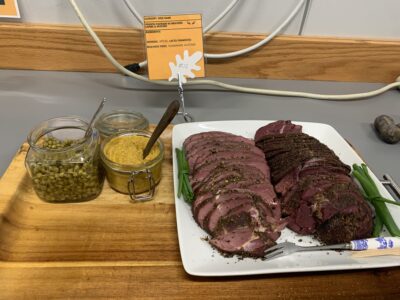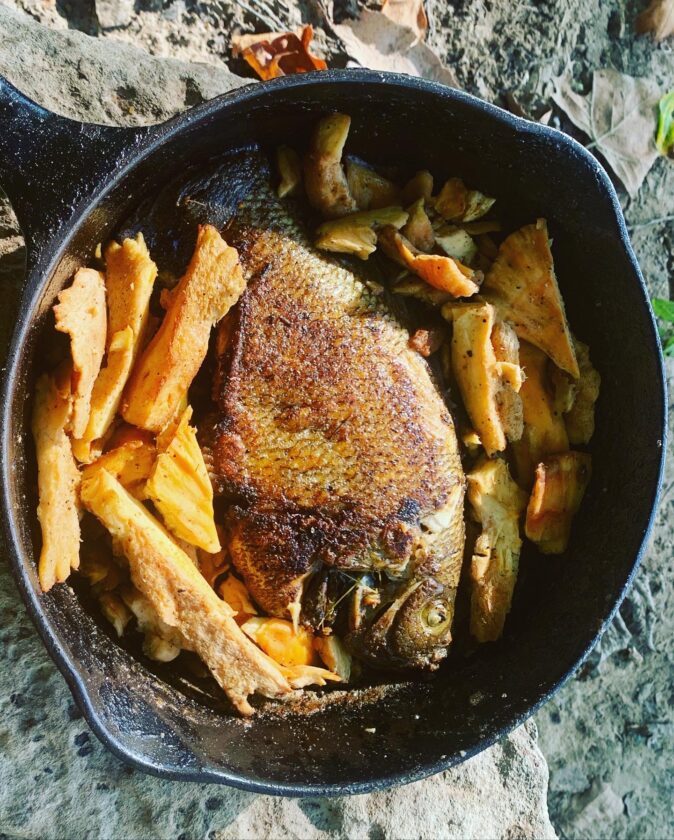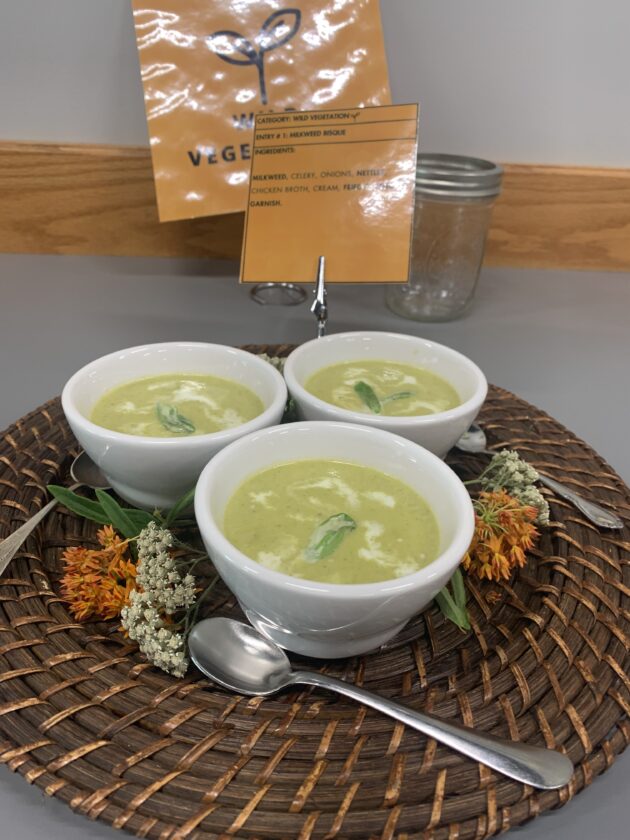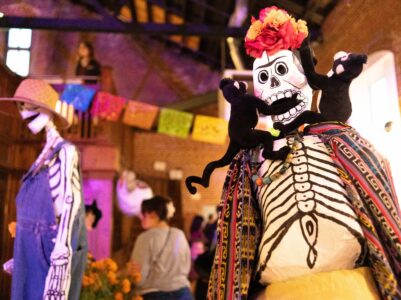Game, greens, even invasive species: Taste Kansas’ wild foods at a cook-off at the Baker Wetlands Discovery Center

photo by: Contributed Photo
Venison pastrami with mustard and milkweed capers at a previous Wild Foods Cook-Off event.
Invasive species. Wild mushrooms. Plants that people might think of as weeds.
It may seem “taboo or off-limits” at first to eat these things, said Amy Bousman of the Kansas Department of Wildlife and Parks, but guests might change their minds about them on Sunday when the department’s Wild Foods Cook-Off comes to the Baker Wetlands Discovery Center.
“It’s a really fun, nonthreatening way to interact with a lot of communities in one place and learn about wild foods,” said Bousman, the department’s engagement coordinator.
From 1 to 4 p.m. Sunday at the center, 1365 North 1250 Road, attendees can taste 15 contest entries for free, vote on their favorite and learn more about the wild foods that live and grow in our state.
Most of the entries are from northeast Kansas, but Bousman said there will be a couple of entries from central and western Kansas, too. There will also be a panel of judges in addition to the popular vote: are all local volunteers with “very refined palates and lots of experience eating different flavor profiles,” Bousman said.
Kelly Kindscher, a plant ecologist for the Kansas Biological Survey at KU and author of “Edible Wild Plants of the Prairie,” has judged the event before and will be returning this year.
He said the contest normally has quite a variety of dishes and styles — some have been simple, like wild greens cooked with salt and butter, and others have been more elaborate, like “a lambs-quarter lasagna.”
“I just like to see people’s creativity,” Kindscher said.

photo by: Contributed Photo
A fish entry at a previous Wild Foods Cook-Off event.
If you come out on Sunday, you’ll see “a lot of foods that people aren’t used to,” as Kindscher put it. The contest has six categories: game, fish, plants, mushrooms, sweets and dishes made with invasive or nuisance species like garlic mustard or Asian carp.
The wild game and wild vegetation categories have the most entries this year, Bousman said, and you can expect some deer meat. Venison has been big in previous contests, she said; one of them featured venison pastrami with homemade stone-ground mustard, and contestants have also put “their own spin” on spiced venison snack sticks.
Those looking forward to squirrel, however, might be a little disappointed. Past events have featured squirrel dishes — Bousman mentioned a “New Brunswick squirrel stew” — but she said none of the entrants this year use that unconventional source of meat.
“Squirrels are so abundant,” she said. “It’s definitely a sustainable backyard protein source.”
While not all of the ingredients need to be in season — dried, frozen or otherwise preserved ingredients are OK — Bousman said the fresh and local aspects of the dishes are a big part of their appeal.
“When ingredients are picked fresh and close to home and combined in just the right ways with the other elements, it creates an outstanding profile,” Bousman said.
But it’s not just the taste that entries will be judged on. It’s also the prominence of the wild ingredients and the visual presentation.
Jason Champagne of Native Chef LLC, another judge, said that elements like fresh herbs and colorful ingredients help elevate a dish and are things that he’ll be looking for.
“People eat with their eyes,” he said.
The judges will choose winners in each category, but the “the big winner,” Bousman said, is voted on by the public in the “community favorite” category. Champagne said the community aspect of the event is one of the most important things about it.
“It’s always important that our community comes together, and food is one way that helps with that,” Champagne said.
It’s also about bringing different interests together — Bousman said the event ties together cooking, hunting, fishing, foraging, ecology and sustainability.
There’s a lot of overlap between them all, and wild foods and foraging have been getting steadily more popular.
“It’s been growing, and it really got a boost since COVID,” Kindscher said. He’s even had students ask him to teach a class specifically about foraging, and while he hasn’t done it yet, “it makes me smile to think about.”
He hopes the wild foods at Sunday’s event will make attendees smile, too.
“Really, this is an effort to connect people with the wilds around them,” Kindscher said. “To get them to appreciate it, know it, share it, share food from it.”

photo by: Contributed Photo
Cups of milkweed bisque at a previous Wild Foods Cook-Off event.






